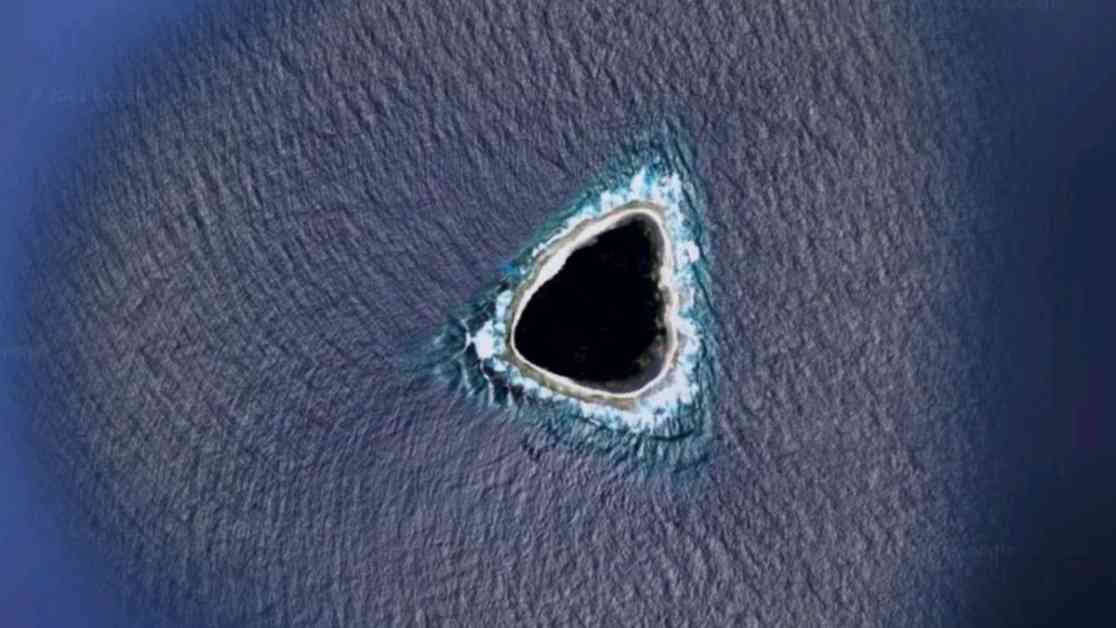A Mysterious Discovery in the Pacific Ocean: Unveiling the Truth Behind the ‘Black Hole’
In 2021, a captivating image captured by Google Maps of Vostok Island in Kiribati sparked a frenzy of speculation online. The image revealed a peculiar triangular structure in the heart of the Pacific Ocean, resembling a dark void that some netizens dubbed a “black hole.” However, the truth behind this enigmatic sight soon came to light, dispelling the fantastical rumors that had taken the internet by storm.
Unveiling the Mystery: Vostok Island Revealed
The image, initially shared on Reddit, quickly garnered attention for its uncanny resemblance to a black hole. Despite being explicitly labeled as an island, the picture fueled a whirlwind of conjecture, with tabloid media outlets seizing on the sensational speculations surrounding the mysterious object. From rumors of a hidden chasm beneath the earth to theories of a clandestine military installation obscured from view, the internet was abuzz with fantastical tales.
However, a swift investigation by reputable sources, including the BBC, unveiled the truth behind the dark anomaly. The so-called “black hole” was none other than Vostok Island, a remote coral atoll nestled among the Republic of Kiribati in the South Pacific. Spanning a mere 0.1 square mile, this tiny landmass is home to a dense thicket of Pisonia trees that cloak the island in an almost obsidian hue when viewed from space.
The Pisonia Phenomenon: Nature’s Dark Canvas
The strikingly dark appearance of Vostok Island in the Google Maps image can be attributed to the unique ecological makeup of the island. The Pisonia trees that dominate its landscape are known for their lush foliage, which not only creates a dense canopy but also prevents the growth of other plant species beneath them. This phenomenon, as documented by JSTOR Daily, results in a monochromatic sea of green that appears almost black when viewed from above.
Apart from their aesthetic impact, Pisonia trees play a crucial role in the island’s ecosystem by attracting a diverse array of seabirds, including boobies, noddies, and frigatebirds. These avian inhabitants aid in dispersing the trees’ sticky seed pods to neighboring islands, facilitating the propagation of the Pisonia species across the region. However, the adhesive nature of these pods can pose a hazard to some birds, leading to entrapment and mortality in extreme cases.
A Legacy of Isolation: Vostok Island’s Untouched Wilderness
Prior to its discovery by Russian explorers in 1820, Vostok Island had remained uninhabited and untouched by human presence. Despite its pristine beauty and ecological richness, the island lacks a sustainable source of fresh water, making it inhospitable for permanent settlement. As a result, Vostok Island stands as a testament to nature’s resilience and the enduring allure of untouched wilderness in an increasingly interconnected world.
In conclusion, the mysterious “black hole” that captivated online audiences with its otherworldly appearance has been demystified as Vostok Island, a remote oasis in the vast expanse of the Pacific Ocean. Through the lens of Google Maps, this enigmatic landmass offers a glimpse into the intricate tapestry of life and nature’s enduring mysteries that continue to fascinate and inspire exploration.










